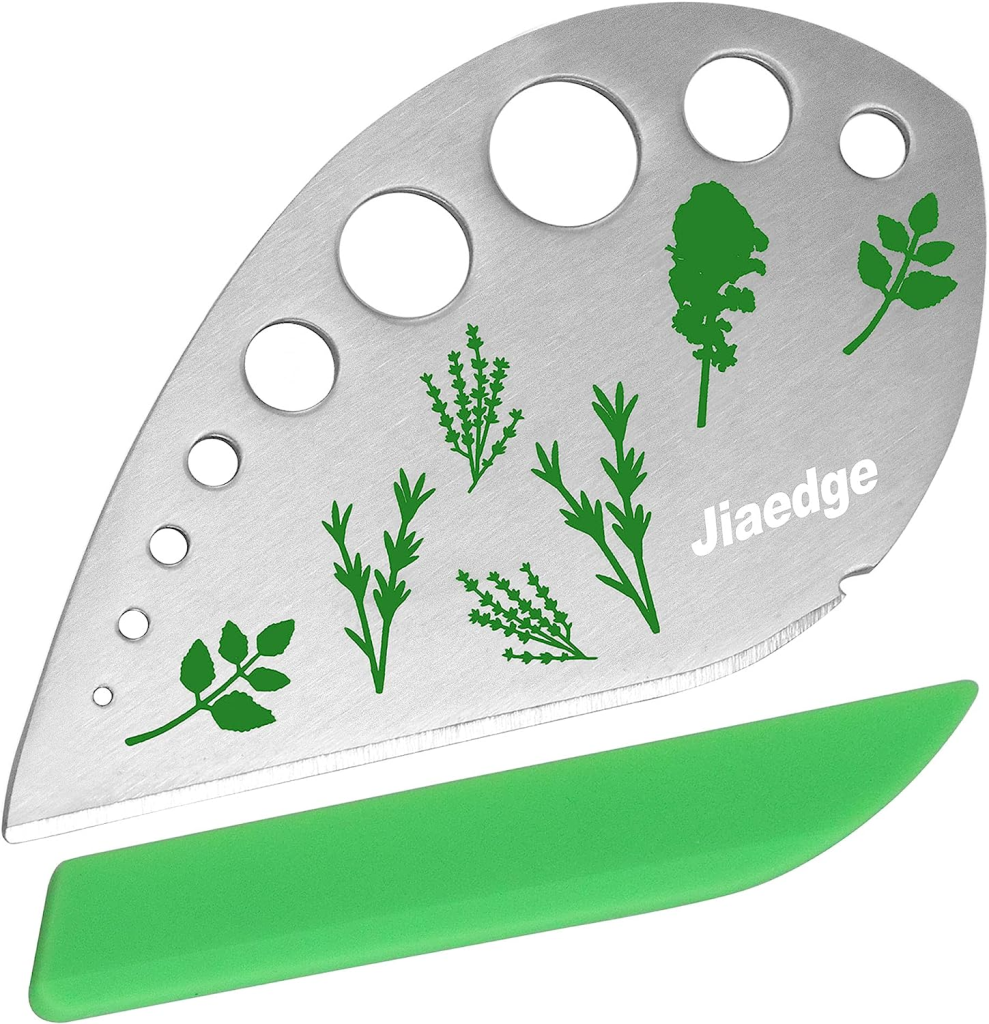Streamline Your Herb Prepping with This Essential Kitchen Tool
When it comes to herbs, there’s simply no comparing fresh and dried varieties. In dishes like salads, dressings, pesto, and garnishes, fresh herbs are essential, boasting a superior flavor and taste compared to their dried counterparts. However, they do come with the drawback of requiring preparation, involving washing, stripping, and chopping, which can be quite time-consuming depending on the herb in question.
For those who appreciate the culinary wonders of fresh herbs, there’s a secret weapon to expedite their preparation – the herb remover, a tool that’s often underutilized. Herb strippers, as their name suggests, are designed to effortlessly separate leaves from stems, with varying hole sizes to accommodate different herbs. Simply insert the stem into the smallest hole that fits and pull it through to release the leaves. Some strippers even have larger holes for greens like kale.

Certain models may include a blade for both stripping and chopping herbs, while others feature bowls to catch the leaves as they pass through. This technology has the potential to revolutionize the way people incorporate fresh herbs into their cooking, inspiring them to use herbs more frequently and even experiment with new ones.

Here are some key tips to make the most of this herb-stripping tool:
Preparation: Start by washing and drying your fresh herbs immediately after purchase to remove any pests or dirt. Wrap them in paper towels and seal them in bags to keep them fresh. However, use them within a few days to savor their distinct flavors.
Basil: This widely popular herb is known for its sweet and somewhat spicy flavor. It’s a staple in Mediterranean cuisine and a key ingredient in pesto. To maximize its taste, add the basil leaves (not the stems) near the end of the cooking process, whether you’re preparing fish, chicken, or homemade pasta sauce.
Rosemary: With a fantastic woody and pine-like flavor, rosemary complements dishes like lamb chops, poultry, roast beef, roasted potatoes, flatbread, sweet potato fries, and even cake.
Cilantro (Coriander Leaf): Cilantro is a versatile herb used in Asian and Latin American cuisine. Some love its bright and zesty flavor, while others find it soapy. It works well both raw and cooked, offering flavor without being overwhelming.
Dill: This herb is a common ingredient in German and Scandinavian cuisine. It features a fresh, earthy, and robust flavor, making it a great match for poultry, yogurt, shellfish, salad, soup, and egg dishes like quiche.
Marjoram: Marjoram has a softer flavor than oregano but is still quite potent. It pairs beautifully with vegetables and meat and can be used to flavor salads, soups, sauces, fish, and various dishes. Don’t discard the stems; they enhance the flavor of stocks and soups.
Thyme: A staple in French cuisine, thyme boasts a floral scent and a powerful flavor that complements dishes without overpowering other ingredients. Just like rosemary, a herb remover can make thyme preparation a breeze. It’s perfect for roast chicken, bread, potatoes, and cocktails.
Mint: Beyond drinks and pastries, mint can elevate salads, poultry, curries, sandwiches, and even fruit salads.
Parsley: With its fresh and delicate flavor, parsley is a versatile and popular herb. While the leaves are most commonly used, the stems can also enhance your cooking. Use it as a garnish, in soups, or to brighten up salads, with endless culinary possibilities. It pairs particularly well with pasta, butter, eggs, and lemon.
Oregano: Known for its strong flavor, oregano is a necessity in recipes like chili, pasta, and pizza sauces. Unlike herbs like basil, it can withstand heat, so it’s best added at the start of the cooking process. Use it sparingly to avoid overpowering other ingredients, and save the stems to flavor stocks and soups.



